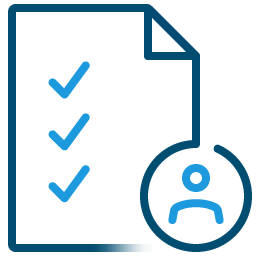
A:CARE INSIGHT
A validated predictive behavioral diagnostic tool for better health through better adherence.¹
Due to the complexity of human behavior, 50% of patients do not take their medications as prescribed.2
How sure are you that your patients are taking their medications?
INTRODUCING A:CARE INSIGHT
A validated predictive diagnostic tool that identifies patient risk of non-adherence and health behavior drivers.
It provides you and your patients with strategies to help achieve better health outcomes.1

UNDERSTANDING AND ENGAGING WITH YOUR PATIENTS
Discover the behavioral drivers that a:care Insight measures, that affect your patient’s health behavior and treatment adherence.
Social
How relationships with others impacts your patient’s bahavior
- Immediate – how a patient’s beliefs about their role and relationships in their immediate entourage affect their behavior.
- Societal – how patient’s beliefs and attitudes about social norms affect their behavior.
Psychological
How your patient’s attitude about identity, authority, and temporal projection impacts their behavior
- Identity – how your patient’s beliefs and attitudes about social norms affect their behavior.
- Authority (Reactance) – how your patient’s tendency to react in response to authority (usually, the authority represented by their healthcare provider) affects their health behaviors.
- Time (Ability to project into the future) – how your patient’s view of future benefits (their importance and their likelihood) affects present health behaviors.
Usage
How capable your patient is to access and follow treatment
- Self-efficacy – how your patient’s physical and mental capabilities affect their treatment.
- Forgetfulness – how your patient’s cognitive status/mental state and the complexity of treatment interact to affect behavior.
- Availability – how location and access affect your patient’s treatment
- Financial – how financial or other practical considerations affect your patient’s treatment
Rational
How cognitive and educational elements impact your patient’s behavior (or – the capacity of your patient to project the benefits/risk balance of the treatment or disease on their life)
- Disease gravity – how your patient’s view of the severity of their disease or its future complications affects behavior.
- Disease susceptibility – how your patient’s perception of their own susceptibility to the disease affects behavior.
- Treatment benefit – how your patient’s perception of the treatment’s potential benefits affects behavior.
- Treatment risk – how treatment obstacles or side effects affect your patient’s health behavior.
WHAT ARE THE BENEFITS OF USING A:CARE INSIGHT WITH MY PATIENT?
After your patient has completed the questionnaire, you will receive three outputs that are complementary to one another to aid in your discussion with them.

IDENTIFIES THE LEVEL OF RISK
Indicates a patient’s likelihood of being non-adherent on a scale from very low to very high.

PRESENTS RISK EVALUATION
Defines the patient’s behavioral drivers that suggest the reasons for non-adherence.

PROVIDES PERSONALIZED FEEDBACK
Provides you and your patients with strategies to help achieve better health outcomes.
a:care Insight uses SPURTM, a dynamic and predictive behavioral diagnostic tool developed by European health tech Observia, whose mission is to improve patients’ lives.
Want to know more about SPURTM and their ongoing research ? Click here
References
- De Bock E, Dolgin K, Arnould B, Hubert G, Lee A, Piette JD. The SPUR adherence profiling tool: preliminary results of algorithm development. Curr Med Res Opin. 2022 Feb;38(2):171-179. doi: 10.1080/03007995.2021.2010437. Epub 2021 Dec 11
- Sabaté E, ed. Adherence to Long-Term Therapies: Evidence for Action. Geneva, Switzerland: World Health Organization; 2003.